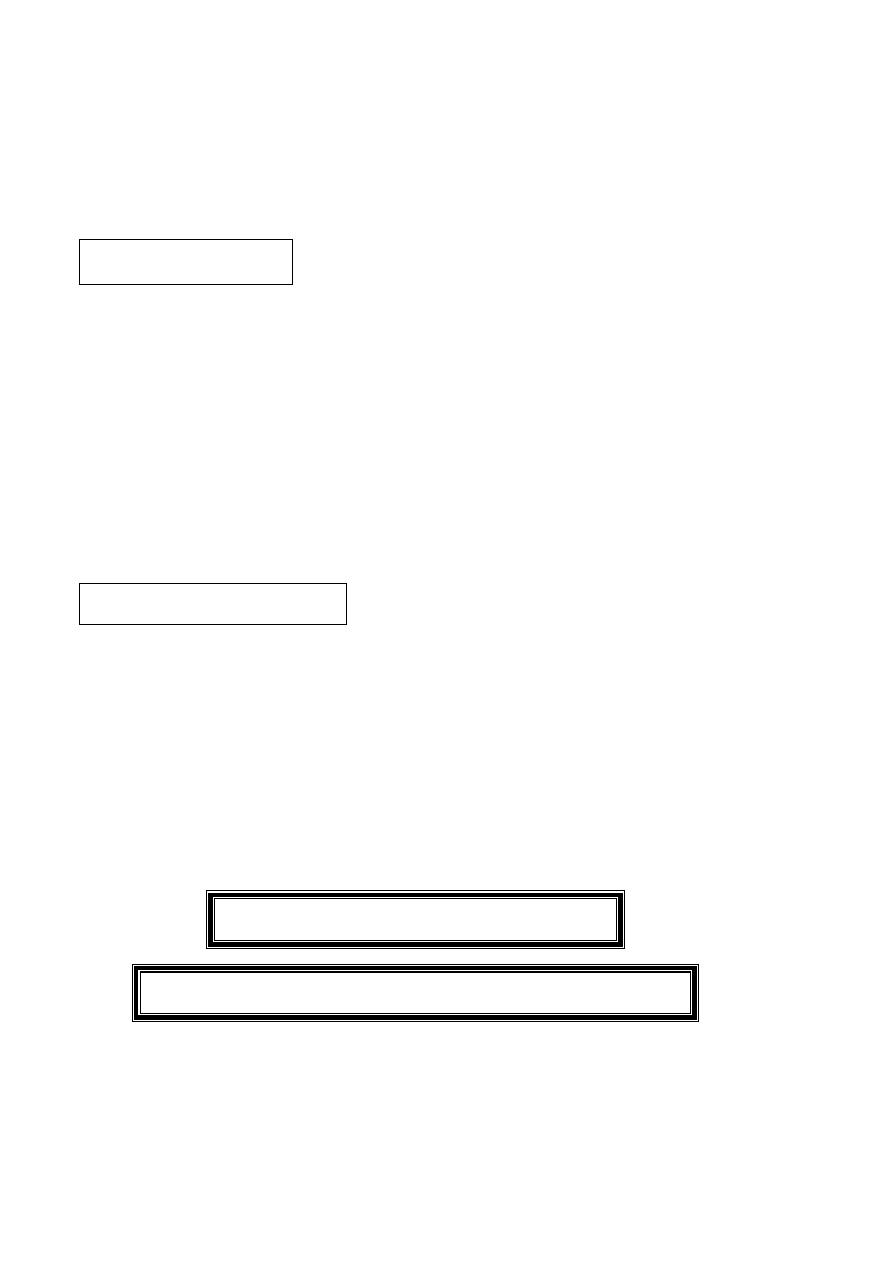
Retina
Gross Anatomy
It is the innermost layer of the eyeball.
*It is starts at ora serrata & ends at optic disc.
*It is very thin & transparent showing the red color
of choroid.
*It is sensitive only to light (translates photons to
electrical impulses that reach the visual cortex and
transformed into a visual sensation).
*Anatomically: the retina is divided into:
1-Central Retina :(Macula Lutea =5.5mm) the center
of the macula is an avascular depression called
"fovea centralis" (1.5mm)
Function: (Mainly cones).
1- Responsible for visual acuity, Color & day vision.
2-Peripheral Retina: ends at the ora serrata.
Function: (Mainly rods) responsible for night vision
and peripheral field
.
Microscopic anatomy
The retina is composed of 10 layers:

(1) Pigment epithelium (RPE):
* It is the outermost layer (in contact with Bruch's
membrane of choroid).
*It is made of one layer of pigmented cubical cells
.
(2) Photo-receptors (rode & cones): [Body
]
The light sensitive layer (contains visual pigments).
(3) Outer limiting membrane: It is made of the outer ends
of Muller's fibers.
(4) Outer Nuclear layer: It's made of nuclei of rods & cones.
(5) Outer Plexiform layer [ Hanel layer in the macula
arranged radially]:
(Synapses between photoreceptors & bipolar cells axons &
processes of the horizontal cells).
(6) Inner Nuclear layer:
It is made up bipolar cells & cells of Muller's fibers +
Amacrine & horizontal cells.
(7) Inner pelxiform layer: the synapses between bipolar
cells, Ganglion cells & Possesses of amacrine cells.
(8) Ganglion cell layer.
(9) Nerve fiber layer: It is made up of the axons of ganglion
cells which form the optic n.
(10) Inner limiting membrane:
It's made of the inner ends of Muller's fibers & in contact
with the vitreous

.
FUNCTION OF THE RPE:
(1) Nutrients & metabolites from & into the choroid.
(2) Essential for Rhodopsin (Vit. A) & Iodopsin
formation.
(3) Absorption of scattered light "prefect optical
image".
(4) Phagocytosis of tissue damage.
(5) Adhesiveness of the underlying sensory retina
(prevents RD).
PHOTORECEPTOR
S
Rods:
1-Thin (easily affected in some diseases).
2-Contain Rhodopsin.
3-Responsible for night vision. (Scotopic vision).
4-Maximum concentration in perifoveal region 160 000 /
mm2.
5-Total number 120 million.
Cones:
1-Thick.
2-Contains Iodopsin.

3-Responsible for day & colour vision. (photopic vision).
4-Maximum concentration in the Center (faveola 147000 /
mm2).
5-Total number 6.5 milions
.
Blood supply
(1) Arteries:
*Inner 5 layers: from central retinal artery (from the
ophthalmic artery).
*Outer 5 layers: avascular (nutrition by diffusion the
choroids capillaries.
The Fundus Oculi
Includes:
1- The retina. 2-The optic Disc (the visible part
of the optic nerve).
3-The choroids. 4-The vitreous
Diseases of Retina
Central Retinal Artery Occlusion (CRAO)
Etiology:
1-Thrombosis: In: arteriosclerosis (in old, DM &
hypertension).

2-Embolism:
a-Detached thrombus: as in Myocardial infraction, aortic
aneurysms or sub-acute B. Endocarditis, Atheromatous
plaques from large BVs like carotid or arch of aorta
b- Air Embolism.
c-Fat Embolism: as in –Crush injury -Acute hemorrhagic
pancreatitis.
3-Spasm: as in -Hypertensive Encephalopathy in young
age
.
-Quinine poisoning.
-Raynaud's disease, burger disease &
Migraine.
4-Arteritis: as in: -Giant cell arteritis (GCA)
-Poly arteritis nodosa.
5-Very high IOP
Signs:
(1) vision: HMNo p.L.
(2) Pupil: *Semi dilated.
*Afferent pupillary defect:
-Direct reaction absent.
-Consensual preserved.

(3) Fundus:
(i)Early (within minutes):
*Arteries: attenuated (thread-like).
*Veins: little attenuation & stagnant blood column may
be segmented
*Retina: -White (cloudy)
-Center (fovea) shows cherry red spot.
(ii) Late (several weeks later):
*Arteries: refill so retina becomes transparent again (but
it's atrophic):
Due to -Relief spasm.
-Canalization of the thrombus (by thrombokinase)
*Retina: the cherry red spot disappears (after 2-3 weeks).
*Investigations Cardiologist
1-Cardio-vascular examination.
2-Echo-cardiogram.
3-Colour Doppler on the carotid
.
*Treatment: Emergency treatment
*Usually useless (if not immediate, after 30-90 min
irreversible damage to retina).
*Aim is to induce vasodilation:
relief the spasm.

If embolus: dislodge the embolus to a smaller peripheral
branch.
By: * General:
1-In halation or sublingual nitroglycerin.
2-Inhalation of carbogen (5% O2 + 95% Co2).
*Local:
1-Peracentesis (leading to hypotony.)
2-Ocular massage to lower the IOP.
3-Retrobulbar vasodilators (Acetyl choline –Priscol ).
Central Retinal Vein Occlusion (Thrombosis)CRVO
:
Etiology
*
1-Inside the vein: due to increased blood viscosity as in:
-Blood diseases: polycythemia, leukaemia.
-Dehydration & contraceptive pills.
2-In the vein wall:
-Phlebitis: as in typhoid, influenza (young),
autoimmune(Bechet disease ).
-Rough intima: as in atherosclerosis (old), DM &
hypertension.
3-Outside the vein: due to pressure on vein by:
-Orbital tumor.
-Increased IOP.

-Sclerosed artery.
-Orbital cellulitis.
picture:
Clinical
*
Symptoms: Rapid painless diminution of vision (6/60
HM) due to hemorrhge , oedema & ischaemia
of the inner 5 layer .
Signs:
*Pupil: -Dilated & sluggish direct reaction (due to retinal
oedema and hge).
-Afferent pupillary defect in ischemic type
.
*Fundus: shows stormy sunset appearance.
1-Veins: engorged & tortuous.
2-Opto-ciliary shunt:
3-Retina: Show extensive Hemorrhage. (dots, blots & flame
shaped) edema, cotton wool exudates +micro
aneurysms.
4-Macula: shows edema & hemorrhage
5-Disc: Hyperemic, edematous.
*Fluorescein angiography (FA):
-Leakage of FI. Into the retina.
-Areas of retinal ischemia in ischemic type.

*Classification:
(I) Ischemic. (2) Non-Ischemic
.
Treatment:
(1) Medical:
*Treatment of the cause: control hypertension & DM.
* Helps blood absorption: alpha-chymotrypsin IM.
* Vit. C: increase integrity of capillaries.
* Prevents platelets stickiness: Aspirin in small doses (75
mg)
.
*Anticoagulant: may cause Hemorrhage (not used).
(2) Laser Photo-coagulation (argon) PRP:
-Indication: in Ischemic cases (after the hemorrhage.
Resolves).
-Aim:
*To destroy the peripheral hypoxic areas ( anoxic) no
vasogenic material release.
*Regression of the neo-vessels.
*Improvement of circulation of the central area.
(3) Intravitreal:
1- Steroids (Triamcinolone acetonide):
-In case of macular edema.
-Steroids regression of new BVs
.

2-Avastin: (anti VEGF)
(4) Treatment of Neovascular glaucoma:
* Seeing eye:
- Medical: Timolol +Diamox +Steroid locally.
- Laser treatment (PRP) : to avoid regrowth of new BVs.
-External fistulizing + Implant.
-If failed do cyclocryotherapy.
*Non-seeing (Blind Painful eye):
-Retrobulbar injection of alcohol.
-Cyclocryotherapy .
-Enucleation
Hypertensive retinopathy
Systemic hypertension is diagnosed on several consecutive
measurement of 140 / 90 or more.
*Pathogenesis:
-Chronic mild hypertension leads to Arteriosclerotic
change.
-Chronic hypertension leads to damage of vessel wall with
breakdown of blood retinal barrier & vascular leakage.

picture:
Clinical
*Symptoms:
-May be asymptomatic.
-Blurred vision.
-Episodes of temporary visual loss.
*Fundus picture:
-Arteriolar narrowing:
1-Generalized & Focal.
2-Severe hypertension may lead to obstruction of pre-
capillary arterioles & development of cotton wool
spots.
-Vascular leakage:
1- Flame-shaped hemorrhage.
2-Retinal edema.
3-Hard exudates. (if in the macula macula star)
.
4-Papilloedema & exudative RD in case of
malignant(accelerated) hypertension.
-Arteriosclerosis: in chronic hyper tension for many years.
*Grades of hypertensive Retinopathy:
Grade 1: Generalized arteriolar narrowing.
Grade 2: Generalized and focal arteriolar narrowing.
Grade 3: As grade 2+Retinal flame hemorrhge + retinal
exudates + Cotton wool spots + all sclerotic change.

Grade 4: Severe grade 3 + papilledema + macular start
+ Exudative RD.
*Treatment: -Control hypertension.
-Weight control.
-Exercise. –Sodium control
Retinopathy of prematurity
*Pathogenesis:
ROP is a proliferative retinopathy affects pre-term infants
<30 weeks or low birth weight < 1500 gm who exposed to
high O2 concentration leads to damage of incompletely
vascularized retina = temporal periphery produce VEGF.
month of
th
reach the nasal periphery at the 8
BVSc
-
(Retinal
gestation & reach the temporal periphery one month after
delivery)
.
*Zones:
Zone 1,2&3.
*Staging:
-Stage 1: Demarcation line separate vascular from
avascular retina.
-Stage 2: Elevated ridge.
-Stage 3: Ridge+Extra retinal fibrovascular proliferation
extend from the ridge into the vitreous retinal
& vitreous hemorrhage.

-Stage 4: Subtotal RD.
-Stage 5: Total RD.
*Extent: number of clock hour involved.
-Treatment: *Stage 1,2 no treatment
*Stage 3 laser photocoagulation or
cyclocryotherapy for the avascular retina
if Threshold disease present.
*Stage 4,5 vitrectomy for tractional RD
.
Diabetic retinopathy (DR)
*Definition: It's a micro- angiopathy affecting the retinal
retinal arterioles, capillaries & venules.
Always bilateral but asymmetrical.
*Etiology: Unknown (DM more than
10yrs, so DR is related to duration of DM not related to
severity of DM, so DR is commom in insulin
dependent = Juvenile DM).
cause of blindness in Egypt.
rd
is the 3
DR
*Risk factors: -Young age & long duration.
-Poor control of DM.

-Coexisting hypertension.
-High blood lipid level.
-Pergnancy
.
Pathogenesis:
*
*Micro-vascular leakage:
1-Due to: loss of pericytes due to sorbital
disturbance of blood – retinal barrier.
*Micro-vascular occlusion:
A) Due to:
1- Thickening of basement memberane: Due to glycogen
deposition decrease diffusion retinal
ischemia.
2-Aggregation & stickiness of platelets
microthrombus.
3-Endothelial cell damage & proliferation. (by
diabetic metabolites).

4-RBCs changes
-Glycosylated Hemoglobin decrease O2 transport.
-Lack of deformability (elasticity) of RBCs.
5-ILM thickening decrease diffusion of O2
from vitreous to retina.
Resulting in
:
Retinal ischemia which release chemical
(vasogenic) factor which stimulate new vessels
formation. PROLIFERATIVE.
*Clinical picture:
Symptoms -Asymptomatic.
-Gradual diminution of vision.
-Floaters. –Acute loss of
vision
.
1- Non – proliferative (simple or Background) DR:
*Retinal Hemorrhage: dot hemorrhage (Deep, rounded
hemorrhage), due to affection of deep plexus.
*Retinal exudate: Deep (hard) exudates arranged in
clumps or rings called circinate + retinal edema.
*Retinal vessels: Micro-aneurysms.

1- Pre-proliferative DR:
*Retinal Hemorrhage.: Dots &blots.
More than 2 quadrants.
*Retinal exudates: soft (cotton wool spots) and hard
exudate & edema.
3-Proliferative DR:
*Retinal exudates: Cotton wool.
*Retinal vessels: neo-vessels (NV) at:
1-The Disc (or within one DD around the disc)
NVD.
2-The Retina NVE
.
*Pre-retinal & Vitreous hemorrhage: Bleeding from the neo-
vessels (may be sub-hyaloid=pre-retinal) which may
organize vitreous fibrosis & epi-retinal membranes
*Tractional retinal detachment: Due to pull by the
vitreous fibrosis & contraction of the epi-retinal
membranes.

4-Advanced Diabetic Eye
(Complication of DR)
*Opaque membranes.
*Tractional RD (Retinitis proliferans).
*Rubeosis Iridis that may lead to neo-vascular
glaucoma
.
5-Diabetic Maculopathy
A) Focal edema: from microaneurysm.
B) Diffuse edema (CME): FA flower petals.
Due to accumulations of the dye within the
microcystic spaces in the radially arranged Henle layer of the
macula.
C)Ischemic maculopathy: due to macular BVs.
*Investigation: *FA (Fluorescein angiography).
-CSME: focal or diffuse or ischemic.
-To detect leaking micro-aneurysms and
ischemia.
-To differentiate IRMA from new BVs
.

Treatment:
1-Medical treatment: (background)
* Control DM & hypertension.
*Prevent platelet stickiness Aspirin (in small
doses)
.
*increase Oxygenation of the retina: give Duxil.
2
-Follow up of Adiabatic patient is very important.
3-Argon Laser treatment:
*Indications:
-In pre.and proliferative DR & robeiosis iridis do PRP.
-In diabetic macular edema do
-Focal treatment (in focal edema).
-Grid treatment (in diffuse edema).
*Aim: as CRVO.
4-Intravitreal Triamcinolone acetonide injection:
5-Vitrectomy+laser endophotocoagulation :
*Indications:
1-Persistent vitreous hemorrhage for 1 month.

2-Viterous traction threaten the
maculaprevent & treat tractional RD.
3-Presistent macular edema.
6-Neovascular glaucoma: as in CRVO
.
Retinal detachment (RD)
Definition:
It's a condition in which the retina is separated into 2
layers:
1-Retinal pigment epith. (R.P.E).
2-Sensory retina (as there is an embryological
potential space between these 2 layers)
(A) Primary (Simple Rhegmatogenous)
*Def.: It's due to formation of a retinal tear, which allow
liquefied vitreous to enter between the retinal layers causing
retinal separation.
*Risk Factors: of Rhegmatogenous RD:
(a) Chorio-retinal degeneration as in high myopia.

(b) Blunt trauma.
(c) Aphakia.
(d) Family history of RD or history of RD in the
fellow eye.
(e) PVD.
(f) Chorio-retinal: toxins necrosis & tear.
Liquefaction of vitreous.
Vitreo-retinal adhesions.
Shape of retinal tears:
(1) Horse-shoe tear (the most common).
(2) Retinal hole.
(3) Arrow head tear
.
(4) Operculated tear: the flap is completely torn
away from the retina.
(5) Irregular or linear.
(6) Giant tear: 90 degree or more of globe
circumference (more than 3o'clock)
.

(B) 2ry Retinal detachment
Def.: It's pushing or pulling of the retina by intraocular
disease with no retinal tear.
1-Tractional RD:
* In which retina is pulled by vitreous fibrosis as in:
-Cyclitic membrane, organized vitreous hemorrhage.
-Proliferative diabetic retinopathy (PDR).
-Retinopathy of prematurity (ROP).
-Penetrating post. Segment trauma: with
vitreous loss & vitreous hemorrhage.
2
-Exudative RD:
In which the retina is pushed by fluid derived from
the choroid which gain access to the subretinal space
through damaged RPE, as in:
-Choroiditis as in "Harada disease".
-Posterior scleritis.
-Neoplasm (malignant melanoma of choroid or
secondaries).
-Coat's disease.

-Sub-retinal neovascularization & Hemorrhage as in
ARMD.
-Systemic causes: toxemia of pregnancy,
malignant hypertension
.
Treatment of secondary RD:
Is the treatment of the cause
1-Tractional: Vitrectomy.
2-Exudative:
-Inflammatory (choroiditis & post. Scleritis)
give cortisone
.
-Malignant Enucleation.
*Clinical picture: of rhegmatogenous RD
*Symptoms: May be asymptomatic for long time
1- Early: The retina still has some nutrition.
- Flashes of light (photopsia): Due to mechanical
irritation of rods & cones by vitreous traction.
-Floaters: (Musca volitans): Due to Vitreous
Degeneration opacities, minute hemorrhage from the
tear into the vitreous & P.E. migration.
-Metamorphopsia, micropsia, macropsia.

2
-Late: Death of photoreceptors (Choroid)
-Field defect (black curtain):
-Failure of vision (HM or PL vision) :(Painless & rapid)
Due to foveal involvement (foveal detachment
)
*Proliferative Vitreo-retinopathy (PVR): due to
proliferation of membranes:
- On the inner retinal surface (epi-retinal
membrane).
- On the outer retinal surface (sub-retinal
membrane)
.
* Treatment:
*Prophylaxis:
Retinal tear sealing.
-Indications:
a) Patient:
-Myopic.
-Aphakic (vitreous herniation tear).
-R.D. in the others eye.
b) Break:

-Large.
-Superior spread rapidly by gravity
.
-Technique of sealing:
Most breaks are adequately treated by:
*Argon laser: (trans-pupillary):
Especially if the media is clear & the tear is
central.
*Cryotherapy: (trans-scleral) especially if the
media is Hazy and peripheral tear).
*Curative:
a) The pt. is atropinized and examined:
-To determine extent of RD
.
b
) The patient rest in bed (to avoid shaking movement)
with tear in the most dependent part.
c)Technique:
I-Sealing of the break:
By -Cryotherapy. –Laser
Which will induce sterile chorio-retinitis that
heals by chorio-retinal scar adhesion between retina &

choroid that prevents leakage of fluid under the retina
prevent spread.
II: Approximation of the retina & choroid (reposition
of the retina):
*Evacuate the Subretinal fluid (SRF)
.
*Scleral buckling:
Pushing the sclera by:
-Silicone implant: it is sutured on the sclera over the tear
(to do invagination implant).
*Intra-vitreal injection of air or expandable gases.
*Complication of silicon oil:
-Inverted hypopyon in AC.
-Cataractogenic.
-Close the angle secondary glaucoma.
-Uveitis.
III: pars plane Vitrectomy+intra-vitreal injection
of silicon oil (to relief retina from vitreo-retinal
traction) and Endo laser.

Degeneration of the Retina
(I) Retinitis Pigmentosa
*Definition: It is heredo-familial, bilateral,
progressive , pigmentry retinal degeneration of
unknown etiology .
*Etiology:
Unknown, may be:
1-Abiotrophy: ischemia & decrease Vit A
2-Photoxicity.
3-Hereditary: mode of inheritance may be,
-Autosomal dominant.
-Autosomal recessive.
-X-linked. (so common in boys)
.
*
Clinical picture:
*Symptoms:
-Night blindness (defective dark adaptation): due to
affection of rods.
-Progressive visual filed contraction.

-Finally, Complete loss of vision.
*Signs
:
1
-Fundus Picture:
-Retina: Spider (Bone corpuscle) like pigmented
spots as equator, then spread ant. & post.
-Vessels: Markedly attenuated.
-Disc: Consecutive optic atrophy (Waxy or pale
disc).
2-Field changes:
-Early: ring(annular)scotoma: due to equatorial
pigmentary degeneration.
3-Investigations
-ERG: is markedly diminished especially Scotopic
ERG, it's affected early (photopic REG is affected
later)
-EOG: subnormal
.

Treatment:
*Useless: 1-Vitamin A. 2-Vasodilators.
3-Placental extract.
*Low vision aid.
*Genetic counseling
.
(III)AGE REALTED MACULAR DEGENERATION
(ARMD).
*Definition: It's a macular disease leads to severe
affection of the central vision in old age above 50 yrs.
*Laterality: bilateral.
*C/P:
(1) Age related maculopathy = drusen:
Small, discrete, yellow white, slightly elevated
bilateral symmetrical spots.
-Pathogenesis: failure to clear the debris discharged
into this region accumulation of the debris
between the RPE & the Burch's membrane
thickening of Burch's membrane.
& also lead to RPE atrophy window defect.

(2) AMD with 2 main types:
1-Dry(atrophic) type:
-There is slowly progressive geographic atrophy
of photoreceptors, RPE & choriocapillaries.
-C/P: gradual impairment of vision.
-FA Window defect.
-Treatment: No effective treatment (stop
smoking +treat hypertension) low vision aid may be
helpful.
2-Wet type: due to abnormal neovascularization
from the choroids (CNV) under retina grow
through a defect in the Bruch's membrane. (appears
as gray-green lesion ) leakage.
*C/P: sudden impairment of vision.
*Treatment:
1) Argon laser photocoagulation: for well-defined
extrafoveal CNV.
The aim it to destroy the CNV without damage to
the fovea.

2)PTD (Photodynamic therapy): for sub foveal CNV.
3) Intravitreal injection of Avastin (Anti VEGF) &
Triamcinolone actinoid.
